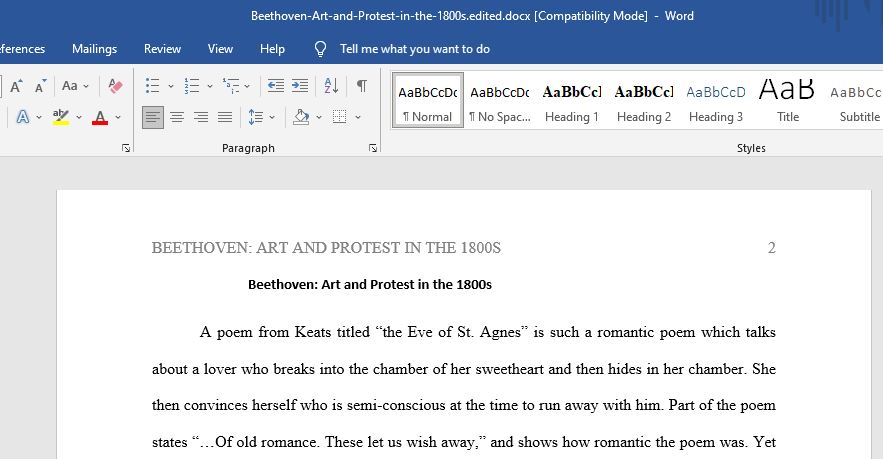Beethoven: Art and Protest in the 1800s
Week Four Discussion Beethoven: Art and Protest in the 1800s
Please respond to each of the following questions, using on line sources and the textbook for your response:
1. Cite several lines from a Romantic poet/poem in our text and then find a landscape painting by Constable or Turner from this time period you think might illustrate those lines. Consider poems from Keats, Shelley, Wordsworth, Coleridge, Bryon, or William Blake.
2. Who is the Person of the Week for week four? Look over the list below of Romantic poets and writers and then tell us which one was the most important, in your opinion, and why as part of your original post. Your choices are Blake, Wordsworth, Coleridge, Keats, Shelley, or Byron. Also, consider the contributions of Mary Shelley, writer of the original book called Frankenstein and Mary Godwin, an advocate for women’s rights. While some worked together (Wordsworth and Coleridge, Shelley and Byron, as well as Shelley and his wife, Mary), and some wrote alone (Keats and Blake–but Blake did work with his wife on his engravings that accompanied his poetry), each was noteworthy and changed the way poetry (and fiction) was written. Several were so famous that they were poetry “rock stars.”
Answer preview:
Word: 500

